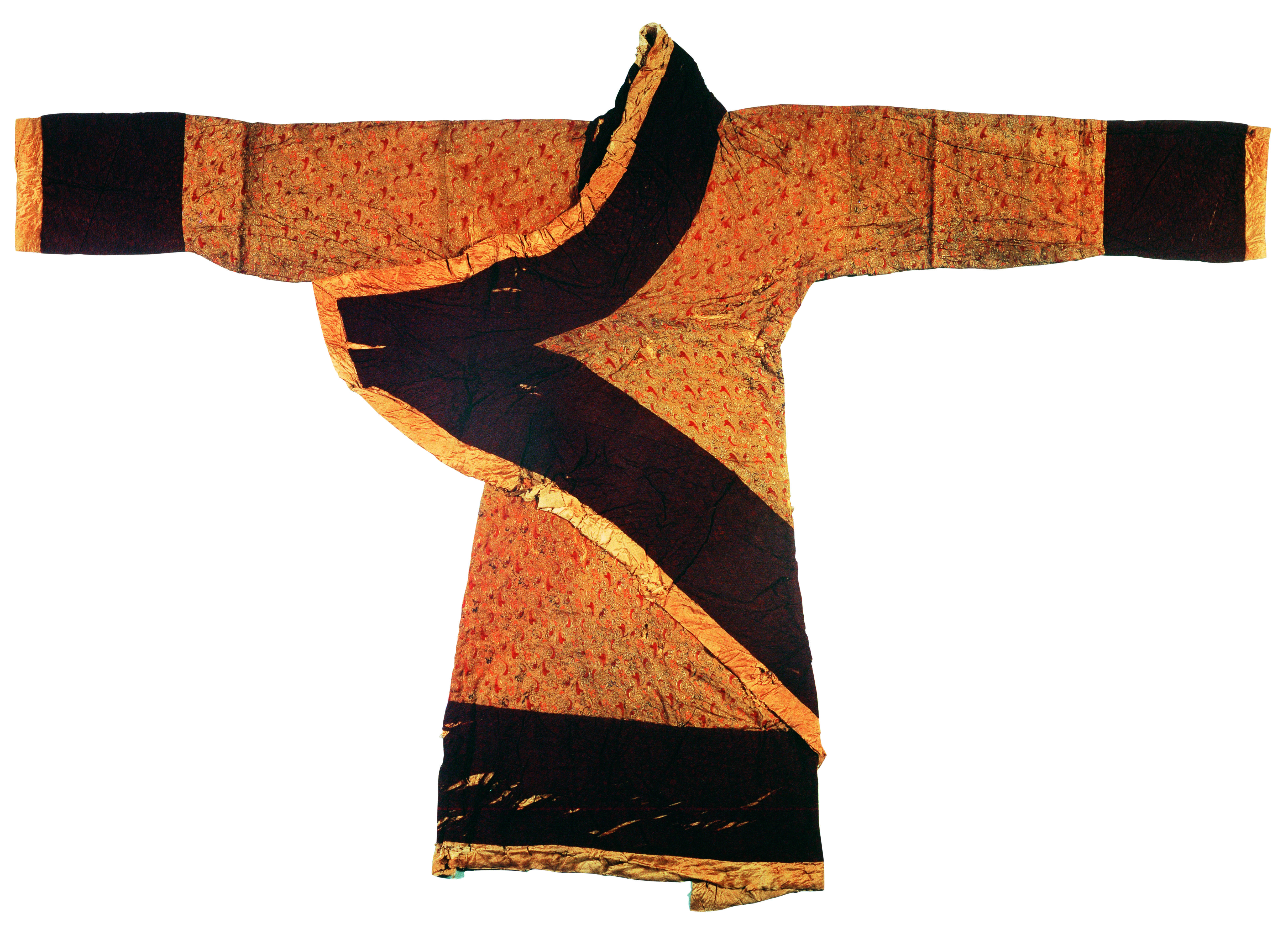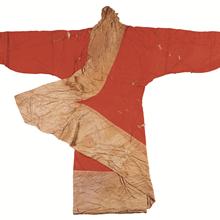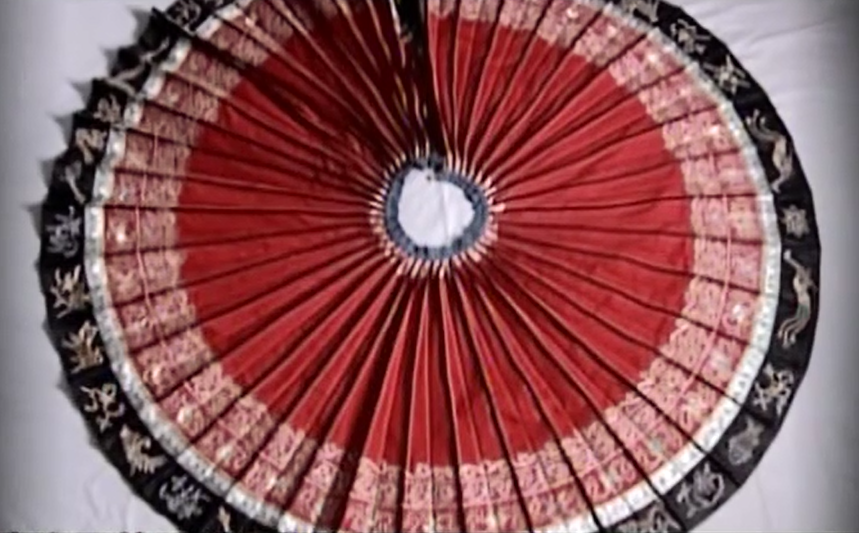Dimensions: Length of the gown: 155cm; overall length of sleeves: 243cm
Origin: Excavated from Han Tomb No.1, Mawangdui, Changsha City, Hunan Province,1972
The gown with “Xin Qi embroidery” has a crossed collar, a front extending diagonally from left to right, and a rectangular skirt. As it has silk padding, it should be a casual long dress worn by Xin Zhui in cold days. The warp and weft density of the tea-color yellow “Xin Qi embroidery” on damask with lozenge patterns used as the outer material is 120×38 per square meter, and that of the plain thin silk lining is 98×46. It is padded with silk wadding and hemmed with thin silk.
In terms of its sewing method, the gown is composed of the upper and the lower parts. The upper part is cut into six pieces: two for the body and two each sleeve. When the six parts are pieced together, sewing starts from under the armpit. Its neckline is pipa-shaped and its sleeves are fairly baggy, falling down to form an arc. The lower part of the gown is diagonally cut into four pieces: the gown fringe is diagonally cut and the added sleeve fringes have the same width as the cuff. The pieces are sewn together with plain stitches.
The design of the outer material of this gown is characterized by two tassel-shaped floating clouds: the upper cloud is in light brownish red and the lower in the two colors of vermillion and dark green. The floral scrolls surrounding the two floating clouds are mostly in dark green and these are dotted with a few vermillion leaf blades. This is the most common design for “Xin Qi embroidery”. Why did people give it such a name at that time? The reason may be traced back to the related connotative meaning embodied in the design of the embroidery. The long-tailed little bird in “Xin Qi embroidery” design appears to be a swallow. As swallow is a migrant bird with fixed timing, it is thus related to the word “Xin Qi”.






